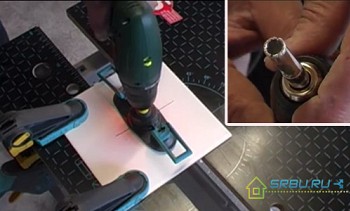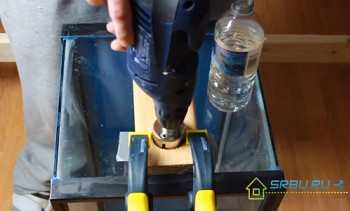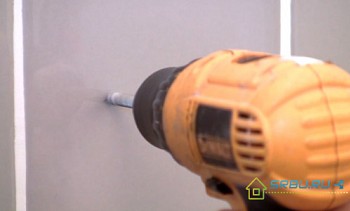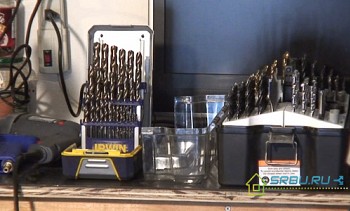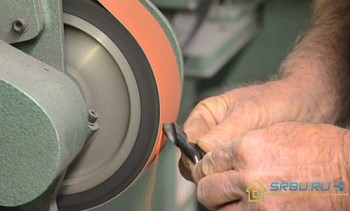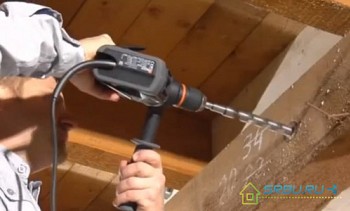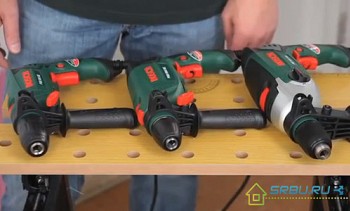To understand which drill bits for metal it is better to get an elementary idea of their types in form, material of manufacture, purpose and method of manufacture. This will help you choose the right tooling for your drill or drill press that will meet your upcoming challenges.
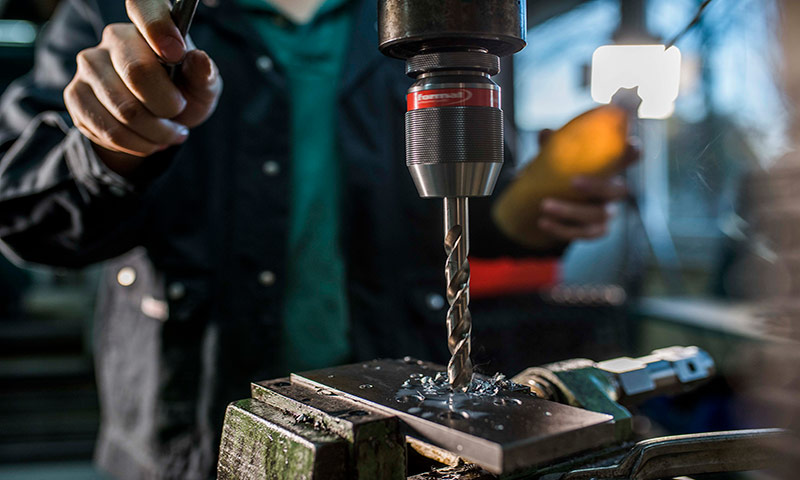
The selection of goods was carried out on the basis of reviews, opinions and ratings of users posted on various resources on the Internet. All information is taken from public sources. We do not cooperate with manufacturers and trademarks and do not call for the purchase of certain products. The article is for informational purposes only.
Varieties of drill bits for metal and their purpose
All drills for metal, at first glance, seem the same. But in reality, there are many differences that divide this cutting tool into different categories in several directions. If you choose the wrong drill, you can quickly break it, not cope with the work or damage the workpiece. We will begin to understand all the differences of the tool.
Variety of drill bits in design
The first thing that distinguishes all drill bits for metal is their design. It depends on what work can be done with such equipment and what kind of power tool they will fit. There are four types.
Twist drills
This type of drill can be from 40 to 400 mm long and from 1 to 50 mm in diameter. The main difference of the design is the equal diameter along the entire length, on which there is a helical cutting edge and a twisted groove extending behind it to remove chips. On the working part, the cutting elements are paired and are located opposite each other.

Spiral drill for metal.
Application. Using such equipment, you can either drill a through hole through a large thickness of metal (it depends only on the length of the drill), and perform a blind hole for the patay. To make a hole for a specific diameter, choose a drill 1 mm smaller than the desired value - after drilling, the tool breaks the sides of the material slightly, creating a size 1 mm larger than indicated on its body.
Step Drills
Step drills have a conical design. Their cutting edge expands to the base, but it is not continuous, but intermittent. The transition to each step is equipped with a smooth rise and a sharp edge to begin drilling from any of them. The diameter is indicated on the step. Each drill can have from 5 to 10 steps.

Step drill for metal.
Application. This form allows you to drill holes of different diameters in the metal sheet with the same tool, which saves time on tooling replacement. They can also drill an existing hole to a larger diameter, starting work immediately from the third or fifth stage. But due to the cone and the low height of each step, the maximum thickness of the material to be drilled is limited to 2-3 mm.
Core drill
This design was named because of its great similarity to the crown. The drill is hollow inside and is equipped with numerous teeth at the end.A line of twisted cutting edges continues along them, which can be from 4 to 16, depending on the diameter of the tool.

Core drill for metal.
Application. Such equipment allows you to immediately make a large diameter hole in the metal up to 50 mm. In order to drill at first and not to stray, in especially large core drill bits there is a place for fixing a twist drill or a sharpened pin that provides alignment.
Countersink
Has a cone-shaped design, but without steps. It is supplied with several cutting edges and grooves behind them to remove chips. But the cutting part is not high, therefore, it will be possible to make shallow holes with a vertical drill up to 3-5 mm.

Vertical drill for metal.
Application. Due to the cone, it is convenient for them to drill for patay or to create holes of different diameters in sheet metal, within their parameters. A vertical drill is also suitable for increasing the existing diameter of the passage, both round and oval.
Shank type drills
To fix the drill in a power tool, it is important that the tail part of the tool and the input opening in the chuck match. With the divergence of the parameters, the fastening will not be strong, which can lead to breakage of the drill, displacement of the center or damage to the workpiece. Therefore, it is important to choose the type of shank that matches the cartridge. There are three types.
Straight shank
It has an even cylindrical shape, has a smaller diameter than the cutting edge, so as not to complicate the rotation when immersed in the material. For fixing, a cartridge with three clamping petals is used, which provides a strong girth. This type is used in electric drills with quick-clamping and conventional chucks and small drilling machines.

Drill with a cylindrical shaft.
Hex shank
As the name implies, it is equipped with a hexagonal base, which gradually passes into a cylinder with cutting edges. This type of equipment is useful in that it does not need to be additionally fixed by twisting the cartridge - installation in a receiving sleeve with reciprocal faces allows you to firmly position the equipment without additional actions.

Hex drill bit.
Changing the drill is carried out quickly, which is especially useful where it is often required to drill wells of different diameters. But with reciprocating movements and biting the snap in the material, it can fall out of the cartridge, since it is designed only for forward movement and keeping it from turning along the axis. They will not be able to drill thick metal. For compatibility, the type of shank is suitable for all screwdrivers.
Tapered shank
The cone-type shank decreases toward the end of the tool. To fasten it in the cartridge, it is enough to quickly insert a snap with the strength of the hand. If the drill is not very tight in the village, then the subsequent work and load will squeeze it to a firm landing. But removing it back is already more difficult. For this, a wedge is used, which is hammered into a special slot in the cartridge.
The wedge acts on the end face of the snap, knocking it out of its seat. In order to prevent the drill from spoiling from falling, in this case, lay a wooden plank. This type of shank is designed for some drills, but is mainly used for drilling machines. If the diameter of the cartridge is too large, then use an intermediate cone between them.

Tapered shank of the drill.
Drills according to the method of manufacture
An important method of manufacturing drills, on which their strength depends. This also affects the service life of the equipment, as well as what types of steel it can be processed. There are three ways.
Whole
They are made by casting, where all the features of the mold are solid. This method produces spiral and conical drills, crowns and countersinks. Belongs to the most common type. To create a tool, high-speed steel is most often used.
Welded
This method is used for the manufacture of drills designed for making holes of large diameter (from 20 mm and above).Since the shank is not involved in the drilling process and transfers less loads than the cutting edge, it is made of ordinary carbon steel and welded to the working structure. This reduces the cost of the production process and does not affect the tool life.
With carbide tip
Here, the main part of the drill is made of high speed steel, and the tip is made of BK8 alloy. A carbide insert better tolerates elevated temperatures when drilling with extremely strong metals and ensures a long tool life. The tip is sharpened one-sided using special technology. After its abrasion from repeated sharpening in some drills, it is allowed to replace it with a new one, while maintaining the tool body.

Carbide tipped drills.
Having considered the main differences between drills, it will be a little easier to choose equipment for the manufacture of metal doors, gates, brackets for air conditioners, spot welding or other tasks. It can be noted that the most common are spiral designs, so we will go on mainly about them.
What steel do metal drills make and which is better
To choose high-quality drills that can last for a long time and retain sharpening despite repeated use, it is important to know from what types of steel a similar tool is made and what are its differences. The best metal drills are made of HSS high-speed steel (common abbreviation) with the addition of a number of impurities. The price of the instrument and the above properties depend on their type and quantity.
High-speed steel is characterized by high hardness, the ability to resist damage and temperature tolerance arising from the drilling speed. The material is alloyed with special impurities, which is indicated in the marking.
For example:
- P - reports that tungsten is present in the alloy.
- F is an indicator of the presence of vanadium.
- M - indicates the addition of molybdenum.
Sometimes manufacturers indicate the type of steel as a special advantage of their products. What can such markings tell? Let's look at popular options.
HSS-E steel drills
5-8% cobalt is added to this high speed steel. This technological solution allows them to drill stainless steels with a tensile strength of up to 1200 N / mm2. Designed for especially binders during heating and complex materials. Instead of the letter E, they can have the designation Co.

HSS-E steel drill
HSS-TiAIN Steel Drills
They have a three-layer deposition (titanium-aluminum-nitride). This increases their heat resistance to a temperature of 900 degrees and allows them to be used on steel with a strength of 1100 N / mm2. Differ in the increased service life surpassing other types by 5 times.

HSS-TiAIN steel drill.
Steel Drills HSS-TiN
Marking indicates spraying of the outer layer with titanium nitride. This adds strength and increases heat resistance up to 600 degrees. Suitable for making holes in cast iron, aluminum, carbon and alloy steel with a tensile strength of 1100 N / mm2.

HSS-TiN steel drill.
HSS-G Steel Drills
Suitable for cast iron and various types of steel with a tensile strength of 900 N / mm2. The cutting part is ground with cubic boron nitride. This gives resistance to radial runout and abrasion resistance. Drills made of such steel are the most common.

HSS-G steel drill.
HSS-R Steel Drills
It is the fastest steel with the least resistance. It may also be indicated simply without the letter R, which will mean conventional heat treatment (hardening) and roller rolling. Suitable for making holes in mild steels and cast iron.

HSS-R steel drill.
Carbide drills
This type of material applies only to the tip of the drill. It is designed for very high temperature loads and is resistant to abrasion. This HHS is used for drills designed to work with titanium alloys, heat-resistant steels and stainless steel.

Carbide drills.
For a long service life and work with particularly hard metals it is better to choose HSS-E and HSS-TiAIN drills.HHS-R or a slightly better HSS-G is enough to drill holes in ordinary carbon steel and not overpay.
What color can tell the drill
In addition to marking indicating the composition of steel and impurities, you need to understand what the color of the drill says. This will tell you what additional processing the metal went through and how it will affect the characteristics of the equipment. Here are common colors.
Gray steel color
These are the simplest drills without additional coating. If left for a long time in a humid environment, they will rust. During drilling, do not put excessive pressure on the tool, otherwise the shaft may break.

Golden hue
This color indicates hardened. The treatment makes the outer part very durable, but increases the internal fragility. Drills hold sharpening for a long time, but tend to break. Periodic re-hardening is required to extend their service life.

Golden bright color
Such drills are immediately noticeable on the counter with their bright color. The effect is provided by surface treatment with titanium. The coating reduces wear from friction and contributes to long-term operation. Drills belong to a high-strength class and stand accordingly.

Black color
Steel is steamed. An inexpensive way to increase the external strength and avoid the occurrence of internal fragility. Drills hold sharpening better and serve longer than gray.

The best sets of drill bits for metal
Knowing thoroughly all the nuances of the types of this tool, materials of manufacture, design and type, we suggest considering the rating of metal drills, which will show the best models that have proven themselves among users. TOP compiled both by the characteristics of the product, and taking into account customer reviews.
Extreme2 29 Pcs. DeWALT DT 7926
A set from an American manufacturer, manufactured at production facilities in Germany. It contains immediately 29 units with a diameter of 1 to 13 mm. In addition to integral values of 1, 2, 3 mm, there are intermediate 1.5, 2.5 mm, etc., which covers all the needs when working with metal and creating various holes. The cylindrical shank is equipped with three faces that improve the fixing in the cartridge.


+ Pros Extreme2 29 pcs. DeWALT DT 7926
- Convenient three-section case with signatures for each drill.
- Fast drilling.
- Long preservation of sharpening.
- The marking is above the working area, so you can always read what diameter is indicated.

- Cons Extreme2 29 pcs. DeWALT DT 7926
- You need to carefully inspect the drills when buying - sometimes used ones come across.
- Some drills have the HHS mark, although the box says HHS-G.
- Thin diameters get very hot during operation - some are even red.
- Complex sharpening, which is difficult to correct yourself.
Output. It is an excellent choice for professional use with regular stainless steel drilling.
AEG HSS-R (19 pcs; 2-10 mm)
A relatively inexpensive set of 19 units with a diameter of 2 to 10 mm. Steel is steamed, so the drill is black.


+ Pros HSS-R (19 pcs; 2-10 mm) AEG
- Convenient case with signed signs and a solid seat for each element.
- Even Soviet steel is drilled.
- Sharpening is well maintained despite frequent use.
- The box has a closing second compartment for small things.

- Cons HSS-R (19 pcs; 2-10 mm) AEG
- The diameter of 10 mm has a large angle of attack, so preliminary drilling with a smaller drill is required, otherwise you can waste time or ruin the equipment.
- You can not put too much pressure on them and divert the drill to the side, because they break off.
- There is no 11-13 mm diameter for inserting locks and other similar works.
Output. This is the best choice for home use, so as not to buy such sets every year. It will last a long time and the tips do not have to be sharpened often.
Metabo (1-13 mm; HSS-G)
German products containing 25 pieces in a set. It features a metal case and convenient extraction of drills. Produced using grinding to increase edge strength.


+ Metabo Pluses (1-13 mm; HSS-G)
- All required diameters are from 1 to 13 mm.
- Intermediate values 1.4, 2.5, 3.5, 4.5, mm help to create precise holes without backlash.
- Iron case does not break from accidental fall.
- The edge does not overheat.
- No beating during rotation.

- Cons Metabo (1-13 mm; HSS-G)
- Drill slowly.
- Weak clasp on the case.
- Sometimes the cutting edge breaks off, but repeated sharpening helps to restore efficiency.
Output. A good choice for construction and housework. This set is enough for many years, so it will be a profitable investment.
Bosch Robust Line 10 pcs. (1-10 mm; HSS-CO)
Decent set from the German manufacturer. In the manufacture of high-speed steel with the addition of cobalt, which makes them the most durable in the rating.


+ Pluses Bosch Robust Line 10 pcs. (1-10 mm; HSS-CO)
- Suitable for drilling all types of metals.
- Very long life.
- Sharp factory sharpening.
- A drill from a set with a diameter of 7 mm will quickly pass a channel with a thickness of 12 mm and a disk from a circular saw - checked by users.
- After completing 100 holes, it looks like new.

- Cons Bosch Robust Line 10 pcs. (1-10 mm; HSS-CO)
- There are no intermediate values.
- Only 10 units per set.
- It is not possible to drill holes over 10 mm in diameter.
- The manufacturer recommended a special lubricant for working with these drills, which is difficult to find on sale.
Output. It is the best choice for professional activities with frequent drilling of stainless steel with a tensile strength of 1200 N / mm2.

